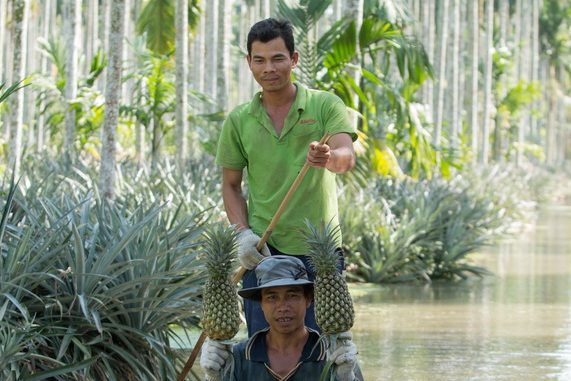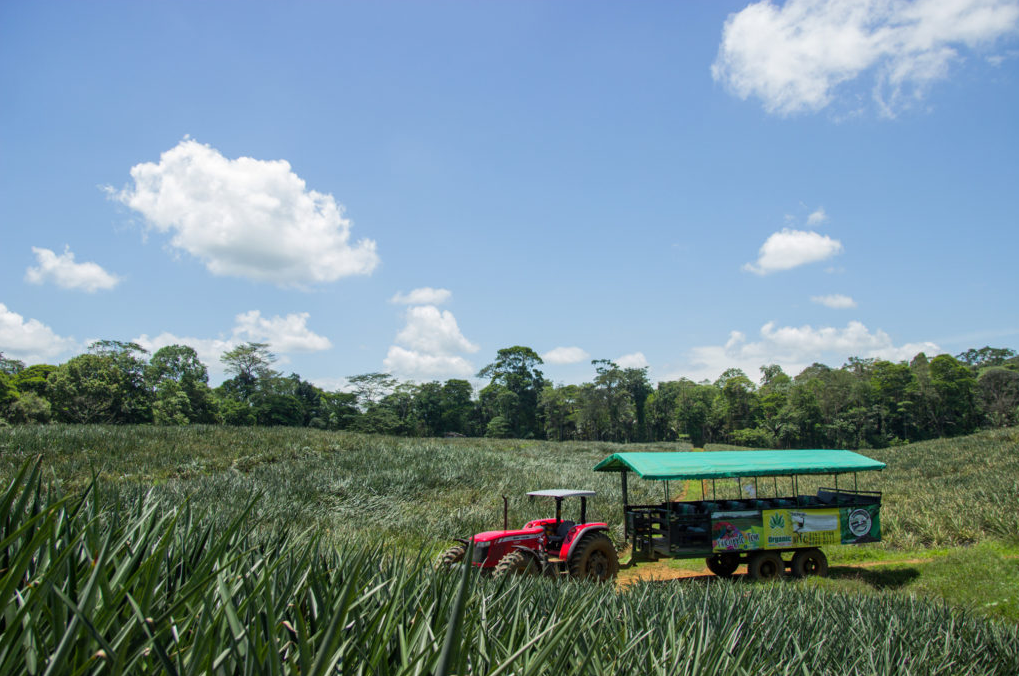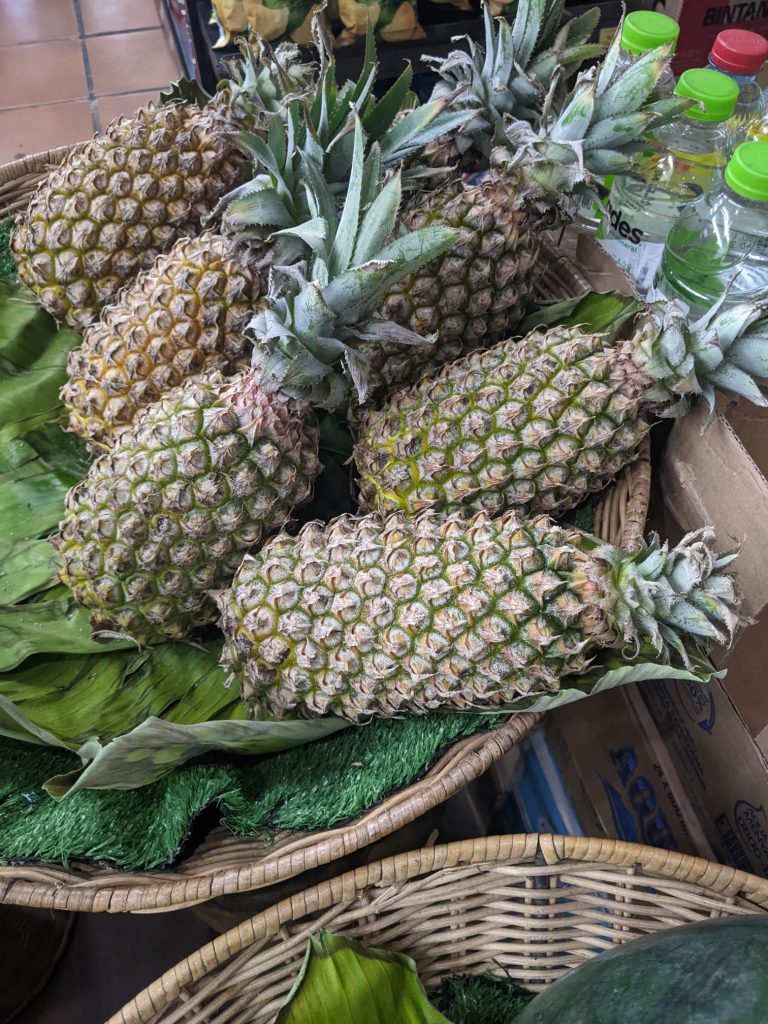Pineapples, the tropical fruit known for their sweet and tangy flavor, are grown in various geographical regions around the world but exactly where do pineapples grow?
As a fan of this delicious fruit, I’ve always been curious about where pineapples come from and the different varieties that exist. In this article, I’ll explore the geographical regions where pineapples thrive, the natural cultivars available, and some notable pineapple plantations in each region. So let’s dive into, quite literally, the world of pineapples!
Geographical Regions where Pineapples Grow
Pineapples are primarily grown in tropical and subtropical regions, where the climate and soil conditions are favorable for their cultivation, much like we explain in this article on how pineapples are grown.
Here are some of the main regions where pineapples are grown:
- Central and South America:
- Costa Rica: Known for its sweet and juicy pineapples, Costa Rica is one of the largest pineapple producers in the world. The country’s tropical climate and volcanic soil create ideal conditions for pineapple cultivation.
- Brazil: With its vast plantations, Brazil is a significant player in the pineapple industry. The country produces a wide range of pineapple varieties, including the popular smooth Cayenne pineapple.
- Southeast Asia:
- Philippines: The Philippines has a long history of pineapple cultivation. The country is renowned for its “Queen” pineapple variety, which is prized for its golden color and exceptional taste. You can read more on types of pineapple, including the “Queen” pineapple, here.
- Thailand: Thailand is another major pineapple-producing country in Southeast Asia. The country is known for its large-scale pineapple plantations, supplying both the domestic and international markets.
- Hawaii:
- The volcanic soil and tropical climate of Hawaii create an ideal environment for growing pineapples. Although pineapple production has declined in recent years, the Hawaiian pineapple is still highly regarded for its quality and flavor.
- Africa:
- Ivory Coast: In recent years, Ivory Coast has emerged as a significant player in the pineapple industry. The country’s favorable climate and rich soil have led to a rapid increase in pineapple cultivation.

Natural Cultivars of Pineapple
Pineapples come in various natural cultivars, each with its own unique characteristics. Here are some notable cultivars you may come across:
- Smooth Cayenne: This is the most common variety found in supermarkets. It has a golden-yellow flesh, a cylindrical shape, and a sweet, tart flavor.
- Queen: Originating from the Philippines, the Queen pineapple has a vibrant golden color, a tender texture, and a rich, sweet taste. It is often considered one of the best-tasting pineapple varieties.
- Red Spanish: This variety features a reddish exterior with green leaves. It has a fibrous texture, a tangy flavor, and is often used in juicing and canning.
- MD-2: Developed in the 1990s, the MD-2, also known as the “Golden Sweet,” is a hybrid cultivar with a bright yellow flesh, low acidity, and a sweet flavor. It is popular for its high sugar content and aromatic qualities.
You can find pictures and more info on pineapple strains and types of pineapple in this article
Notable Pineapple Plantations
Several pineapple plantations around the world stand out for their scale of production and quality. Here are a few notable ones:
- Dole Plantation (Hawaii, USA): Located in the heart of Oahu, the Dole Plantation is a popular tourist destination that offers a glimpse into Hawaii’s pineapple industry. Visitors can explore the pineapple fields, learn about the cultivation process, and enjoy various pineapple-based treats.
- Del Monte (Costa Rica): Del Monte is one of the leading pineapple producers in Costa Rica, operating vast plantations across the country. They are known for their sustainable farming practices and commitment to quality.
-
Bukidnon (Philippines): The province of Bukidnon in the Philippines is famous for its pineapple plantations. Many local farmers grow pineapples on a smaller scale, contributing to the region’s pineapple industry. Del Monte also has a large pineapple plantation here.
PHILPACK operates the world’s largest fully-integrated pineapple operation, based in the Philippines; a 20,000-hectare pineapple plantation with a 700,000-ton processing capacity. - Nkusi Pineapple Plantation (Ivory Coast): Located in Ivory Coast, the Nkusi Pineapple Plantation is one of the largest pineapple plantations in Africa. It has helped boost the country’s pineapple production and export capabilities.
Not all of these pineapple plantations listed above are open to the public. If you’re interested in visiting one of these pineapple plantations, we have a guide for that right here.

Where do pineapples grow in brief
Overall, pineapples are grown in tropical and subtropical regions worldwide, with Central and South America, Southeast Asia, Hawaii, and Africa being major contributors.
Each region offers unique pineapple cultivars that vary in taste, texture, and appearance.
Notable pineapple plantations like Dole Plantation, Del Monte, Bukidnon, and Nkusi contribute significantly to the pineapple industry in their respective regions. So, the next time you enjoy a juicy and think to yourself “where do pineapples grow?”, remember its journey from the lush fields of these tropical paradises to your plate!


0 Comments